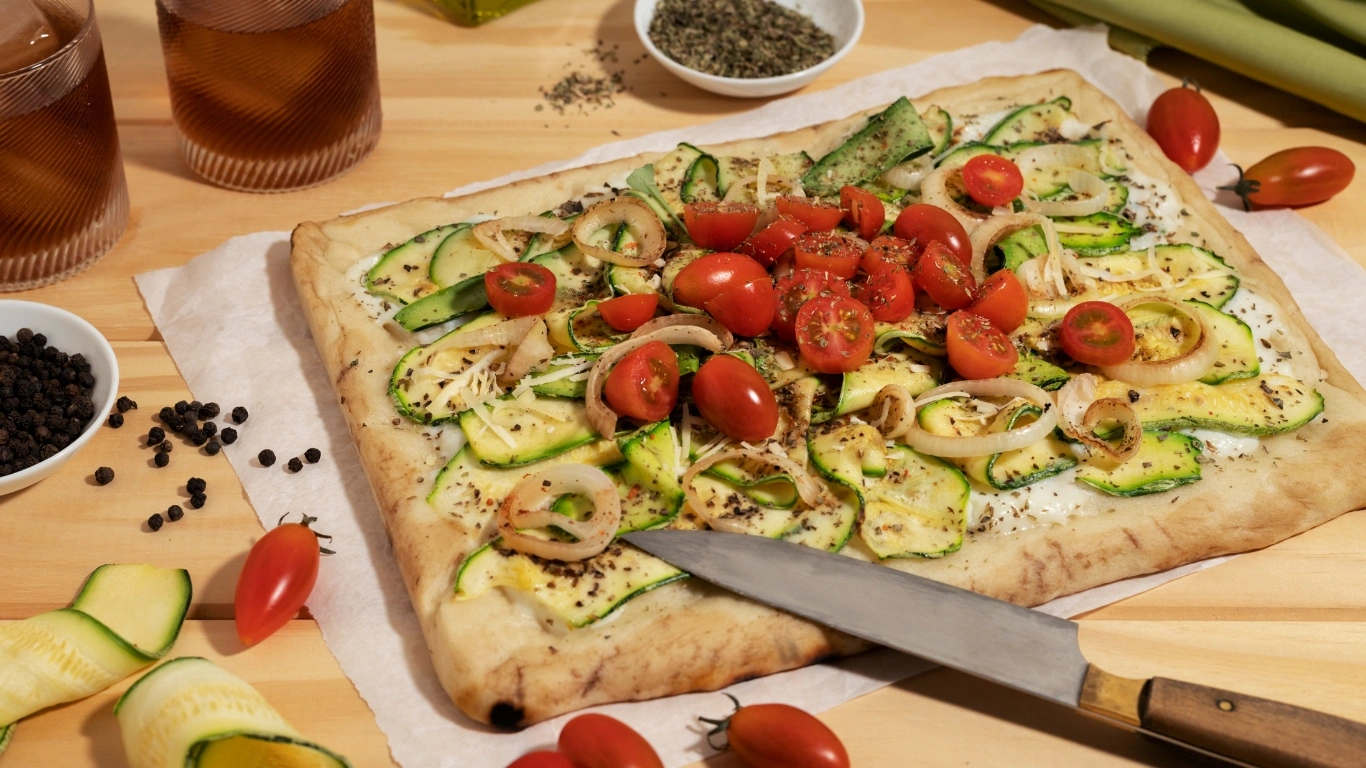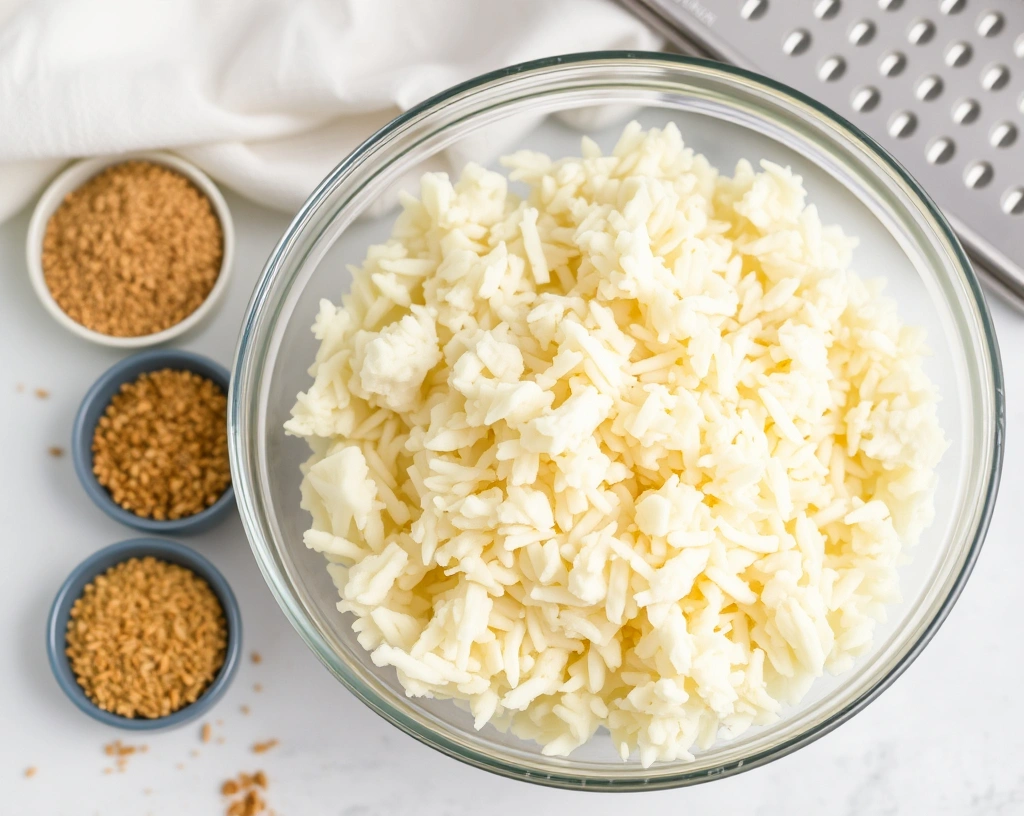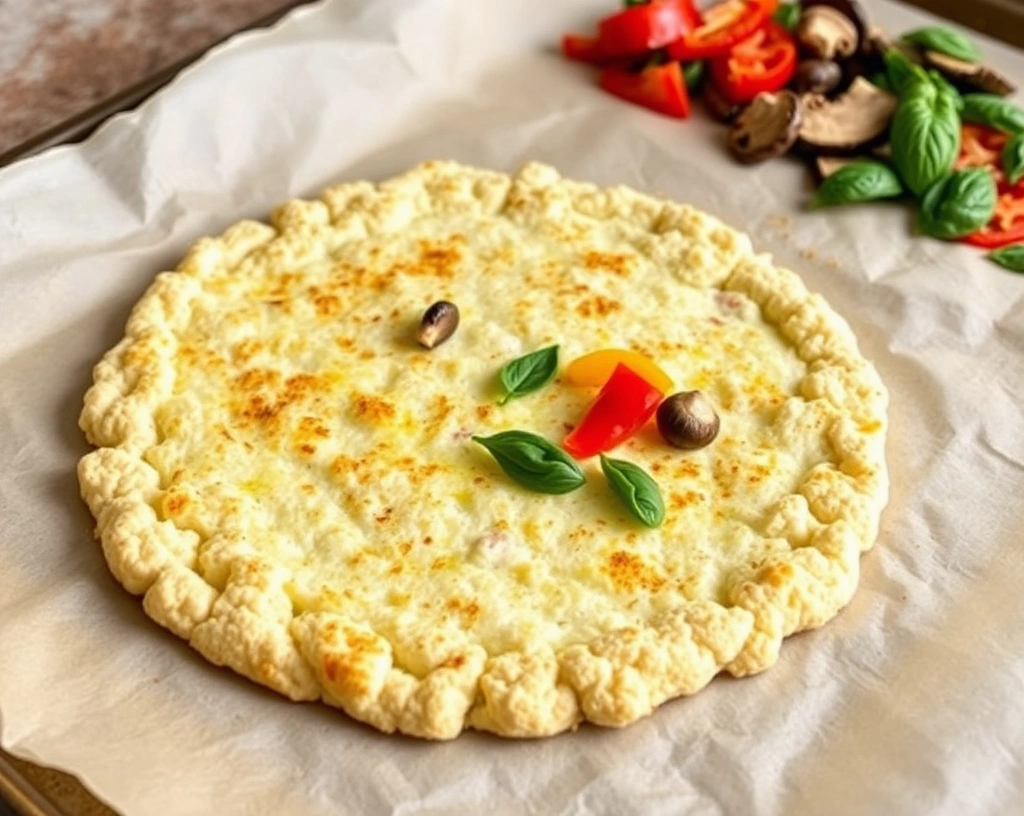Introduction
Pizza doesn’t have to leave your plate when you’re following a vegan or gluten-free lifestyle. With vegan cauliflower pizza crust recipes, you can enjoy all the flavors you love while skipping the carbs, gluten, and dairy. For insights into creating gluten-free dishes, this guide to vegan and gluten-free recipes provides helpful ideas. Cauliflower is a versatile ingredient often used in creative dishes, as shown in this guide to vegan cauliflower recipes. This guide walks you through the benefits of cauliflower crust, the ingredients you’ll need, and tips to make your crust perfect every time. Additional plant-based recipes are available in this article on easy vegan recipes.
What Is Cauliflower Pizza Crust?
You create cauliflower pizza crust by blending or grating cauliflower and combining it with binders to hold it together. This low-carb, plant-based alternative to traditional pizza dough naturally avoids gluten and dairy, making it ideal for vegan, keto, or paleo diets. The crust provides plenty of fiber and nutrients, letting you indulge without guilt.
Why Choose Vegan Cauliflower Pizza Crust?
Vegan cauliflower pizza crust offers plenty of advantages. It allows you to get creative with toppings and seasonings while staying healthy. It avoids refined carbs and preservatives commonly found in store-bought pizza bases. You’ll also digest it more easily, which makes it ideal for those with food sensitivities or gut concerns. Learn more about the health benefits of cauliflower in this article on cauliflower’s benefits.
The Growing Popularity of Vegan Pizza
Vegan pizzas are revolutionizing the food industry, and cauliflower crusts are leading the trend. Home cooks and pizza enthusiasts are embracing this healthy and delicious option. With cauliflower crust, you can enjoy pizza night without compromising on flavor or texture.
Ingredients and Tools Needed for Vegan Cauliflower Pizza Crust
Making a vegan cauliflower pizza crust recipe requires simple, wholesome ingredients and a few kitchen tools. These essentials ensure your crust turns out perfectly every time.
Essential Ingredients for Vegan Cauliflower Pizza Crust
1. Cauliflower
Cauliflower forms the base of your crust. You can use fresh cauliflower for the best results, but frozen cauliflower works too. If you use frozen cauliflower, thaw it completely and remove excess water before using.
2. Vegan Egg Substitutes
To bind the crust, use vegan-friendly alternatives like flaxseed meal or chia seeds mixed with water. These options create a gel-like consistency that holds the ingredients together.
3. Nutritional Yeast
Nutritional yeast adds a cheesy, savory flavor to the crust. This ingredient is a favorite among vegans because it boosts flavor while providing a dose of B vitamins.
4. Spices and Seasonings
Seasonings like garlic powder, oregano, salt, and pepper enhance the flavor of the crust. You can also add smoked paprika or chili flakes if you prefer a spicy kick.
5. Optional Additions
For a sturdier crust, consider adding almond flour or tapioca starch. These ingredients improve the texture and make it easier to handle.
Tools You’ll Need
1. Food Processor or Grater
A food processor simplifies the process of ricing cauliflower into fine, even pieces. If you don’t have one, a box grater works well too.
2. Cheesecloth or Nut Milk Bag
Draining excess water from the cauliflower is crucial. Use a cheesecloth or nut milk bag to squeeze out as much moisture as possible. This step ensures your crust is firm and not soggy.
3. Baking Sheet and Parchment Paper
To shape and bake your crust, you’ll need a sturdy baking sheet lined with parchment paper. The parchment prevents sticking and helps the crust bake evenly.
Proper ingredients and tools make all the difference in achieving a crispy, delicious vegan cauliflower pizza crust. Let’s move on to how to prepare the crust step by step.
How to Make Vegan Cauliflower Pizza Crust (Step-by-Step Guide)
Follow this detailed guide to create the perfect vegan cauliflower pizza crust recipe. With simple steps and easy-to-find ingredients, you’ll have a delicious, healthy pizza base ready in no time.
1: Prepping the Cauliflower
- Rinse and Cut: Start by washing the cauliflower thoroughly. Then, remove the leaves and cut the cauliflower into small florets to ensure easy processing.
- Rice the Cauliflower: Next, use a food processor to pulse the florets into a rice-like consistency. If you don’t have a food processor, you can shred the cauliflower with a box grater instead.
- Cook the Cauliflower: After ricing the cauliflower, steam or microwave it for 5–7 minutes until it softens. Let it cool for a few minutes before handling so it’s easier to manage.
- Remove Excess Water: Finally, transfer the cooked cauliflower to a cheesecloth or nut milk bag. Then, squeeze it tightly to remove as much moisture as possible. This step is essential because it prevents the crust from becoming soggy.
2: Creating the Dough
- Combine the Ingredients: In a large mixing bowl, mix the drained cauliflower with flaxseed meal (or chia seed gel), nutritional yeast, garlic powder, oregano, and a pinch of salt and pepper. Stir thoroughly to combine all the ingredients evenly.
- Adjust Consistency: If the mixture feels too wet, gradually add almond flour or tapioca starch—one tablespoon at a time—until the dough holds together when pressed.
3: Shaping the Crust
- Prepare the Baking Sheet: Begin by lining a baking sheet with parchment paper to prevent sticking.
- Shape the Dough: Next, place the dough on the prepared sheet. Flatten it with your hands into a circular or rectangular shape, depending on your preference. For the best results, aim for a thickness of about ¼ inch so the crust bakes evenly and crisps up nicely.
4: Baking the Crust
- Pre-Bake the Crust: Bake the crust in a preheated oven at 400°F (200°C) for 20–25 minutes, or until it turns golden brown and feels firm. Keep an eye on it to ensure the edges don’t burn.
- Check the Texture: Once baked, confirm that the edges are crisp and the center is no longer wet. If needed, bake for a few extra minutes to achieve the desired texture.
5: Adding Toppings
- Choose Your Base: Start by spreading a layer of tomato sauce or pesto over the pre-baked crust.
- Add Toppings: Then, arrange your favorite vegan toppings, such as mushrooms, spinach, bell peppers, cherry tomatoes, or vegan cheese, evenly over the base.
- Final Bake: Lastly, return the pizza to the oven and bake for an additional 8–10 minutes. During this time, the toppings will cook, and the cheese will melt, creating a flavorful, cohesive dish.
Nutritional Content (Per 100g)
| Nutrient | Value |
|---|---|
| Calories | 120 kcal |
| Protein | 4 g |
| Carbohydrates | 10 g |
| Fat | 6 g |
| Fiber | 3 g |
Tips for the Perfect Vegan Cauliflower Pizza Crust
Creating the perfect vegan cauliflower pizza crust recipe requires attention to detail. While the process is simple, a few extra tips can help you avoid common pitfalls and ensure your crust turns out crispy, flavorful, and sturdy every time.
How to Prevent Sogginess
One of the most common challenges with cauliflower crust is preventing sogginess. To achieve the right texture:
- Remove Moisture Completely: Always squeeze the cooked cauliflower as much as possible using a cheesecloth or nut milk bag. The drier the cauliflower, the firmer your crust will be.
- Pre-Bake Thoroughly: Pre-baking the crust for 20–25 minutes ensures it becomes firm before adding toppings.
- Don’t Overload with Toppings: Use a light layer of sauce and moderate toppings to avoid weighing the crust down or making it too wet.
Flavor Enhancements
A flavorful crust can elevate the entire pizza experience. Here’s how to boost taste:
- Season the Dough Generously: Add garlic powder, onion powder, oregano, or Italian seasoning to the dough for a burst of flavor in every bite.
- Incorporate Nutritional Yeast: This ingredient adds a cheesy, umami flavor to the crust, making it more enjoyable on its own.
- Experiment with Herbs and Spices: Try mixing fresh herbs like basil or parsley directly into the dough for an aromatic twist.
Common Mistakes to Avoid
Avoid these pitfalls to ensure success with your vegan cauliflower pizza crust:
- Skipping the Draining Step: Excess moisture is the main reason crusts fall apart or turn soggy, so never skip this critical step.
- Using Too Much or Too Little Binder: Adding too much almond flour or not enough flaxseed meal can throw off the dough’s texture. Follow the recipe’s guidelines for perfect results.
- Rushing the Baking Process: Baking the crust too quickly or at an incorrect temperature can leave it undercooked. Take your time and use a reliable oven thermometer.
By following these tips, you’ll consistently produce a cauliflower crust that’s crispy, delicious, and holds up under your favorite vegan toppings.
Nutritional Benefits of Vegan Cauliflower Pizza Crust
A vegan cauliflower pizza crust recipe isn’t just delicious—it’s also packed with nutrients that make it a healthier alternative to traditional pizza dough. Here’s why this option is a game-changer for those looking to enjoy pizza guilt-free.
Calories and Macros Breakdown
A cauliflower pizza crust is naturally lower in calories compared to wheat-based crusts. This makes it an excellent choice for anyone aiming to manage their calorie intake without sacrificing flavor. For every 100 grams of cauliflower crust, you’ll typically find:
| Nutrient | Value |
|---|---|
| Calories | 120 kcal |
| Protein | 4 g |
| Carbohydrates | 10 g |
| Fat | 6 g |
| Fiber | 3 g |
High in Fiber
Cauliflower is an excellent source of fiber, which aids digestion and promotes a healthy gut. A fiber-rich diet can also help stabilize blood sugar levels and keep you feeling full longer, making it easier to avoid overeating.
Rich in Vitamins and Minerals
Cauliflower is a powerhouse of essential vitamins and minerals. It contains:
- Vitamin C: Boosts the immune system and supports healthy skin.
- Vitamin K: Helps maintain strong bones and supports blood clotting.
- Potassium: Regulates fluid balance and muscle contractions. Additionally, the flaxseed or chia seed binders add omega-3 fatty acids, which are great for heart health and brain function.
Why It’s Better Than Traditional Pizza Crust
When compared to regular pizza dough, vegan cauliflower pizza crust stands out for its health benefits:
- No Gluten: Ideal for those with celiac disease or gluten sensitivity.
- Low in Carbs: Perfect for keto, paleo, or low-carb diets.
- Lower in Fat and Calories: A great choice for weight management without sacrificing taste.
- Dairy-Free and Plant-Based: Safe for vegans and those with lactose intolerance.
This nutrient-rich crust proves that healthier alternatives don’t have to compromise on flavor or satisfaction. Ready to try something new? In the next section, we’ll explore exciting variations of this recipe to suit your preferences!
Variations of Vegan Cauliflower Pizza Crust Recipe
The beauty of a vegan cauliflower pizza crust recipe lies in its versatility. Not only can you enjoy it as-is, but you can also customize it to suit your preferences or dietary needs. Whether you’re looking to spice things up, add unique flavors, or try a gluten-free twist, these variations have you covered.
Gluten-Free Version
For a completely gluten-free crust, ensure all your ingredients, including almond flour or tapioca starch, are certified gluten-free. Additionally, double-check your spices and seasonings, as some may contain traces of gluten. This version is ideal for anyone with gluten sensitivity or celiac disease.
Spicy Crust
If you love a bit of heat, adding chili flakes, smoked paprika, or cayenne pepper to your dough can do the trick. Not only does this variation bring a spicy kick, but it also pairs perfectly with toppings like jalapeños, vegan sausage crumbles, and red onions. For even more flair, sprinkle additional chili flakes on top before serving.
Herbed Crust
To elevate the aroma and flavor of your pizza crust, incorporate fresh herbs directly into the dough. For example, chopped basil, parsley, or rosemary can add a gourmet touch. This variation works especially well with Mediterranean-inspired toppings like sun-dried tomatoes, artichoke hearts, and olives.
Cheesy Crust
For those who crave extra cheesiness, increase the amount of nutritional yeast in the recipe. Furthermore, you can sprinkle vegan parmesan or plant-based cheese shreds over the crust before baking. Not only does this create a rich, indulgent flavor, but it also ensures your crust has a satisfying, cheesy twist without using dairy.
Low-Carb Keto Crust
If you’re following a keto diet, consider using coconut flour instead of almond flour. Coconut flour has fewer carbs and absorbs moisture effectively, which results in a firmer crust. Combine this variation with keto-friendly toppings like avocado slices, mushrooms, and spinach for a low-carb meal that’s both delicious and satisfying.
Customizable Shapes
Pizza doesn’t always have to be circular or rectangular. For instance, you can get creative by forming mini crusts for personal-sized pizzas or shaping the dough into a heart for special occasions. This variation is not only fun for kids but also adds a unique twist to your pizza night.
With so many variations, you can easily tailor your vegan cauliflower pizza crust to fit any craving or dietary need.
FAQs About Vegan Cauliflower Pizza Crust
Curious about vegan cauliflower pizza crust recipes? You’re not alone! Here are answers to some frequently asked questions to help you make the most of this versatile and healthy dish.
What Is Vegan Cauliflower Pizza Crust Made Of?
Vegan cauliflower pizza crust typically contains riced cauliflower, a plant-based binder like flaxseed meal or chia seeds, nutritional yeast for flavor, and seasonings such as garlic powder, oregano, and salt. Depending on the recipe, almond flour or tapioca starch can be added for extra structure.
How Do You Keep Cauliflower Pizza Crust From Falling Apart?
To ensure your crust stays firm and holds together:
- Always squeeze out as much moisture as possible from the cooked cauliflower using a cheesecloth or nut milk bag.
- Use an adequate amount of binder, such as flaxseed gel or chia seed gel.
- Pre-bake the crust thoroughly before adding toppings to set its shape and texture.
With these tips, your crust will stay intact even under a generous layer of toppings.
Can I Freeze Cauliflower Pizza Crust?
Absolutely! To freeze, pre-bake the crust as usual and allow it to cool completely. Then, place it in an airtight container or wrap it tightly in plastic wrap. When you’re ready to use it, bake it directly from frozen at 400°F (200°C) until heated through and crispy. This makes meal prep a breeze!
Is Cauliflower Pizza Crust Healthier Than Regular Pizza Crust?
Yes, cauliflower pizza crust is significantly healthier than traditional crusts made with refined flour. It is lower in calories, carbohydrates, and fats while offering a boost in fiber and nutrients. It’s also gluten-free and plant-based, making it an excellent choice for a wide range of dietary needs.
What Toppings Work Best with Vegan Cauliflower Crust?
Vegan cauliflower pizza crust pairs well with a variety of toppings. Some popular options include:
- A base of marinara or pesto.
- Fresh vegetables like mushrooms, bell peppers, zucchini, and spinach.
- Vegan cheese alternatives like mozzarella shreds or cashew cheese.
- Herbs such as fresh basil, oregano, or parsley for garnish.
Feel free to mix and match toppings to create a pizza that suits your taste.
Can I Make the Crust Thicker or Thinner?
Yes, you can adjust the thickness of the crust to suit your preference. For a crispy crust, spread the dough thinly (around ¼ inch thick). For a softer, bread-like base, make the crust slightly thicker but ensure it bakes evenly by adjusting the time.
Can I Use Pre-Riced Cauliflower?
Yes, pre-riced cauliflower is a convenient alternative. However, you’ll still need to cook and drain it thoroughly to remove excess moisture before forming the crust.
By addressing these common questions, you’re now better equipped to create and enjoy vegan cauliflower pizza crust with confidence. Let’s wrap things up with a quick conclusion and encouragement to try this recipe!
Conclusion and Encouragement to Try Vegan Cauliflower Pizza Crust
Crafting a vegan cauliflower pizza crust recipe is an exciting way to enjoy a delicious, healthier alternative to traditional pizza. With its versatility, nutritional benefits, and simplicity, it’s no wonder cauliflower crust has become a favorite among vegans, keto enthusiasts, and anyone seeking a plant-based twist on a classic dish.
Whether you’re whipping up a gluten-free version, experimenting with herbs and spices, or adding your favorite vegan toppings, this recipe offers endless possibilities. Plus, it’s not just tasty—it’s packed with fiber, low in carbs, and free of gluten and dairy, making it a fantastic choice for a variety of dietary needs.
Now it’s your turn! Grab your ingredients, follow the step-by-step guide, and get creative with your toppings. Share your creations with friends and family, and don’t forget to experiment with different variations to discover your favorite combination.
With a bit of practice and some imagination, you’ll soon master the art of making the perfect vegan cauliflower pizza crust. So, preheat your oven, gather your favorite veggies, and enjoy a guilt-free pizza night that everyone will love!


